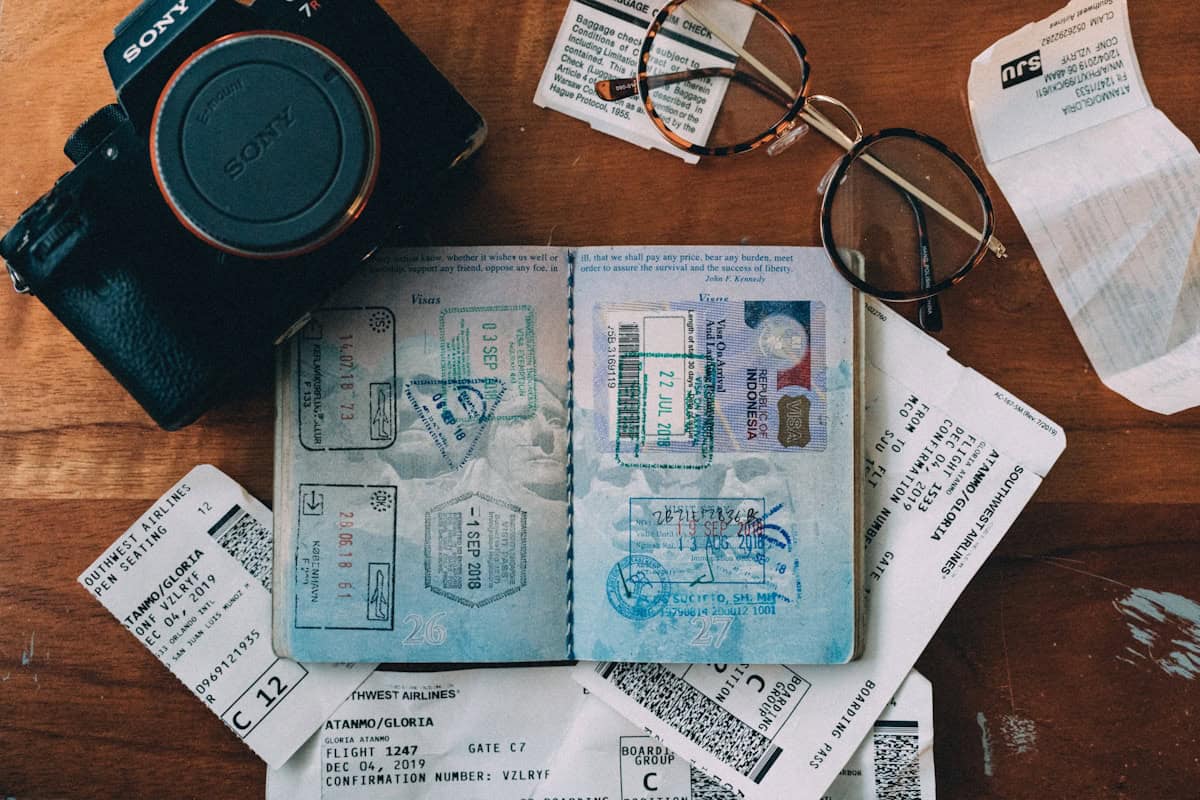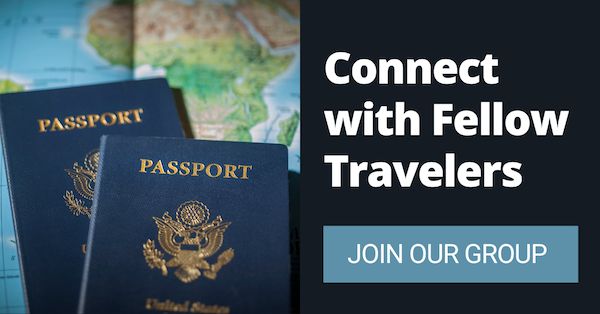
How to Prepare Your Travel Documents for an International Trip
By: Christian Santos
Skip to Section
Article Summary
Your passport vanished into thin air minutes before boarding, and suddenly you’re living every traveler’s worst nightmare. With over 30,000 lost passports reported in Australia alone during 2024, you’re definitely not the first person to face this crisis.
This guide walks you through building a bulletproof international travel documents system that prevents disasters before they happen. You’ll learn how to create smart checklists covering everything from core documents to destination-specific paperwork, plus get the real talk on when AI translation works versus when you need professional help. The article covers both physical and digital security strategies, because losing your documents abroad can turn a dream trip into a bureaucratic nightmare that takes weeks to resolve.
- Complete document checklists prevent last-minute panics by covering passports, visas, insurance, and destination-specific requirements like work permits
- Professional translation beats AI for legal documents, while AI works great for quick references and general travel materials
- Waterproof document holders and hotel safes protect physical copies, while encrypted cloud storage with two-factor authentication secures digital backups
- Multiple backup layers include printed copies stored separately, cloud files, and emergency contacts with embassy information
- Cultural and legal requirements vary wildly by country, with some demanding certified translations in local languages for business or extended stays
You’re at the airport, minutes from boarding, when you realize your passport is missing. Panic sets in. It happens more often than you might think. Australia recorded over 30,000 lost or stolen passports in 2024, and thousands of U.S. travelers face the same crisis each year.
In preparing your travel documents for an international trip, you need to make sure you keep them safe, have translated versions when necessary, and have a backup. One missing visa or unreadable form can derail your plans.
In this guide, you’ll learn how to build an international travel documents checklist, secure both physical and digital copies, and understand when to use AI translation or professional translation to ensure accuracy.
Step 1: Build Your International Travel Documents Checklist
A successful trip starts with a complete international travel documents checklist. While the specific items vary by destination, most travelers will need:
- Core documents: A valid passport (with at least six months before expiry), necessary visas, flight boarding passes, travel insurance documents, and proof of vaccinations (especially for countries with health entry requirements).
- Supporting documents: Hotel confirmations, transportation bookings (trains, ferries, rental cars), and an emergency contact list.
- Destination-specific paperwork: Work permits, student IDs, or invitation letters for conferences, volunteer programs, or business meetings.
The U.S. State Department recommends travelers also carry secondary identification like a driver’s license or national ID card in case of emergencies. A 2024 survey found that 37% of Americans admitted they’re more forgetful when traveling, and on average, they leave behind three items per trip.
Print your documents, but also create digital travel documents, PDF or image copies stored securely online. This redundancy ensures access if something is lost or stolen. Many seasoned travelers organize their paperwork in a folder labeled by trip segment (flights, accommodation, activities) for quick retrieval.
By starting with a clear checklist, you’ll avoid last-minute scrambles and ensure you have all the necessary documents for international travel.
Step 2: Translate Travel Documents if Needed
If your trip involves destinations where English (or your native language) is not widely spoken, you may need to translate travel documents in advance. These can include:
- Medical records for ongoing treatments
- Rental agreements or property contracts
- Employment or business contracts
- Customs forms or work permits
A recent NASC Ireland survey found that the two biggest language-related challenges for tourists and migrants are filling out forms and understanding official documents.
Professional translation services ensure your paperwork is legally valid, culturally appropriate, and free of mistranslation errors. For example, a small wording mistake in a lease agreement could change your rights or responsibilities abroad.
When using an AI translator, choose a secure online document translation platform to protect your personal or legal information. Whenever possible, keep the document’s original format, especially for forms, certificates, or legal paperwork.
AI translation is fast and convenient, making it useful for quick references or travel materials, but it’s not always suitable for legal or certified documents. Many professional translators now use AI to produce a draft, which a linguist then reviews to ensure accuracy and meet official requirements. Understanding your specific translation needs can make it easier to navigate language barriers and get timely, accurate help.
Step 3: Secure Your Physical Copies
Even in an increasingly digital world, physical travel documents remain essential. They’re still required at border crossings, check-ins, and some government offices abroad. The problem? They’re vulnerable to theft, loss, or damage.
In 2024, lost luggage and misplaced travel documents accounted for millions in insurance claims worldwide, with one Australian traveler receiving a $16,000 payout after losing both passport and travel paperwork in Europe.
To protect yours:
- Use a waterproof document holder or zip pouch for passports, visas, and important papers.
- Store original documents in a hotel safe or locked compartment, and carry copies for daily activities.
- Avoid keeping all documents in the same bag or wallet.
Labeling each document folder clearly (e.g., “Flights,” “Accommodation,” “Health”) will also make it easier to grab exactly what you need in a hurry. This organizational step is often overlooked but can save precious minutes in airport queues or at embassy visits.
Step 4: Protect Your Digital Travel Documents
Digital storage is convenient, but without proper precautions, it’s a security risk. In 2024, over 1 billion personal records were stolen in global cyberattacks, with cloud storage accounts a frequent target. Cybercrime damages are projected to reach $10.5 trillion annually as of 2025, making it critical to secure your files.
To safeguard your digital travel documents:
- Store them in encrypted, password-protected cloud platforms like Google Drive, Dropbox, or iCloud – and enable two-factor authentication (2FA).
- Avoid public wifi when accessing or sharing files unless using a reputable VPN.
- When sharing with family or colleagues, use secure file-sharing tools with “view only” permissions.
If you’re unsure about cloud storage, keep copies on an encrypted USB drive in your luggage. This provides quick offline access while keeping the files secure from online threats.
A 2025 travel security poll found that only 26% of travelers use a VPN abroad, and just 15% regularly encrypt their documents. Considering the high stakes of identity theft, taking these extra steps is worth it.
For additional peace of mind, change your cloud storage passwords before traveling and again after returning home.
Step 5: Create Backups and Emergency Plans
If you lose key travel documents abroad, replacements can take days or even weeks to process. Backups are your best insurance policy.
Have multiple layers of backup:
- Printed copies stored separately from the originals
- Digital copies saved in the cloud and on an encrypted USB drive
- Encrypted file access shared with a trusted contact back home
Keep a printed emergency contact sheet with local police, hospital, and embassy numbers. While many travelers rely on smartphones for this, a dead battery or network outage can leave you stranded.
In 2024, the FTC received 6.5 million consumer fraud reports, many involving identity theft linked to stolen documents. By having backups ready, you significantly reduce your risk of being left helpless if something happens to your originals.
Step 6: Understand Cultural and Legal Requirements
Every country has unique entry, visa, and document rules. Some even require that certain paperwork, like contracts or business permits, be translated into the local language and officially certified.
For example:
- Japan requires foreign work contracts to be submitted in Japanese for specific visa categories.
- Brazil mandates Portuguese translations for specific legal and medical documents.
An AI translator can help you understand general content quickly, but for legal or government submissions, professional translators are your best bet. They can help ensure compliance and prevent costly delays.
While translation cost varies, investing in quality now can save thousands in missed workdays, reapplication fees, or even denied entry. In 2025, global translation industry reports show that hybrid AI + human workflows are cutting turnaround times by up to 80%, making professional translation faster and more affordable than ever.
For Long-Term or Remote Work Abroad
If you’re traveling for extended periods or planning to work remotely abroad, your documentation needs become more complex. Alongside standard travel papers, you might need:
- Extended stay or digital nomad visas
- Tax registration forms for the host country
- Local business or freelance permits
Many destinations require that you translate these for local compliance, and failing to meet translation or format requirements could lead to visa rejections or fines. The earlier you start preparing for your transition to the nomad or expat life, the smoother the process will be.
Ready to Travel?
Preparing your travel documents for an international trip isn’t just a simple checklist you can do at the last minute, but it also doesn’t have to be a vacation-ruining slog. It’s a safeguard against unexpected disruptions – by combining secure storage, multiple backups, and the right mix of AI translation and professional translation, you protect both your identity and your itinerary.
Safe travels – and remember, your documents are your passport to a stress-free adventure.
Featured image by Kit (formerly ConvertKit) on Unsplash
Information published on this website and across our networks can change over time. Stories and recommendations reflect the subjective opinions of our writers. You should consult multiple sources to ensure you have the most current, safe, and correct details for your own research and plans.
Frayed Passport is a participant in the Amazon Associates Program, an affiliate advertising program designed to provide a means for sites to earn advertising fees by advertising and linking to Amazon.com. We also may share links to other affiliates and sponsors in articles across our website.




